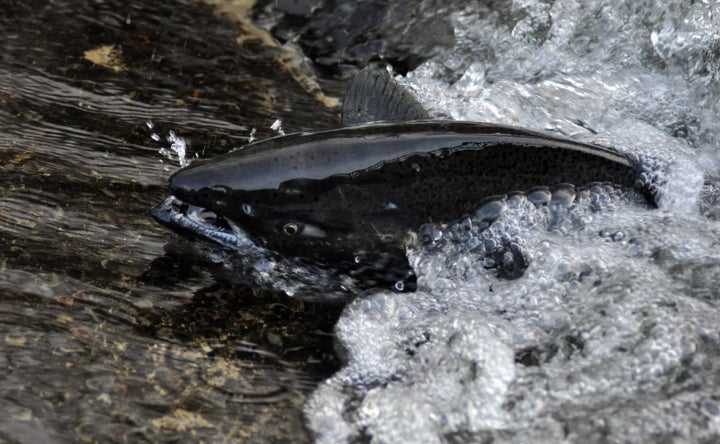
Four years ago, the once-mighty Chinook salmon runs in California and Oregon were so small that the states agreed to an unprecedented moratorium on fishing. The conservation measures, along with some strategic modification of the dams that had hurt salmon in the past, seemed to work. Salmon watchers seemed optimistic that stocks were well on their way to recovery. Salmon census data indicated that the number of adult salmon returning to spawn in California's Mokelumne River had grown from just over 400 in late 2008 to nearly 18,000 this past year.
A new study of the Chinook, though, shows that most of those salmon were born not in the wild, but in Chinook hatcheries. Only 10 percent of the salmon in the river were born in the wild and returned later to spawn; the rest were originally born in the hatcheries, which are designed to support recovery.
"When you use the raw fish counts, it looks like the population is doing well," said UC-Santa Cruz's Rachel Johnson in the press release for the study. "But if you look at the number of fish that are produced in the wild and return to spawn in the wild, and you follow them through the cycle, you see that the wild fish don't survive at a high enough rate to replace their parents."
These trends mean that hatchery-born salmon are becoming a larger and larger part of the overall population in the rivers, when you'd hope that the wild salmon would quickly take over the process. Salmon born in hatcheries are better than no salmon, but they aren't ideal. One big problem with relying on them is that, because they aren't forced to adapt to harsh conditions when they're very young, they aren't necessarily as hardy as those salmon born and bred completely in the wild.
It wasn't clear until this study that so many of the fish in the rivers were born in hatcheries because those fish aren't visibly marked before being released into the wild. Johnson and her team identified them by testing for traces of feed used in hatcheries lingering in their ear bones.
The New York Times writes that the study indicates that marking hatchery-born salmon -- perhaps by clipping a fin -- could provide an easier avenue for monitoring their prevalence in the future.